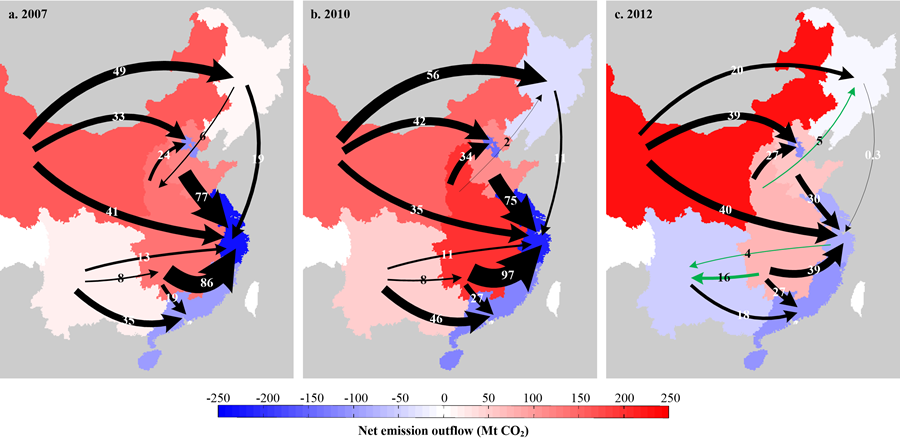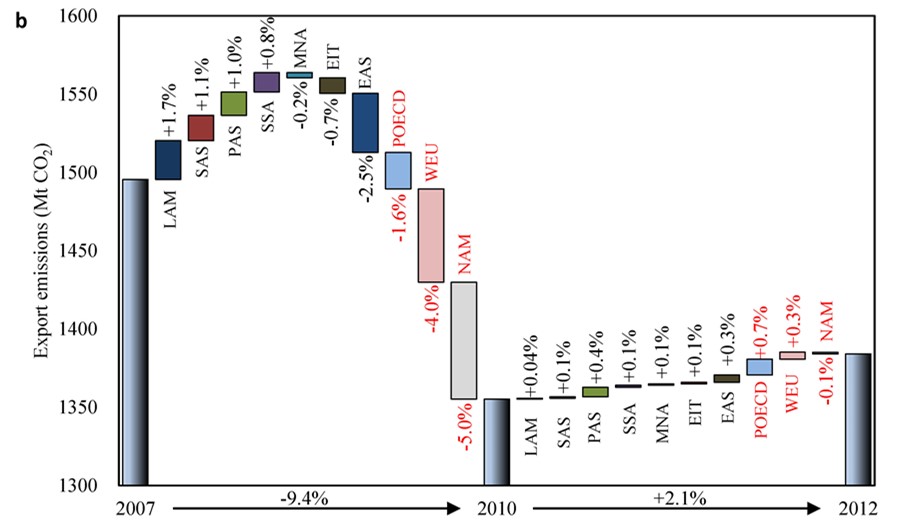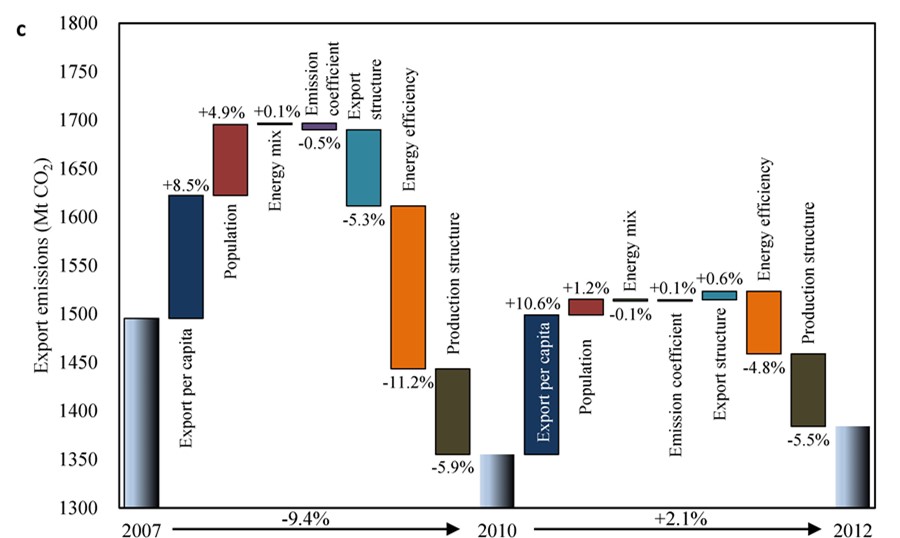Chinese CO2 emission flows have reversed since the global financial crisis,fruit of The key R & D project (2016YFA0602600) of Research on integrated assessment model of Climate Change Economics led by Professor Wei Yiming, was published in "Nature Communications". Since the international financial crisis, China has gradually entered the new-normal phase of the economy, faced with tremendous challenges of energy, environmental and climatic changes when the economy growth rate is slowing. Facilitated by national systematic reforms, China is progressively transforming its traditional way of economic development. Thus, both domestic trade and international trade undergo structural changes. Given this, the impact of China’s shifting economic development patterns on regional carbo flow are discussed in details.
The author compiled China’s 2012 provisional multi-regional input0-output table using the gravity model, which can depict the trading relationships between 30 sectors in 30 provinces (Hong Kong, Macon, Taiwan and Tibet are exclude considering the data availability). The author further linked China's multi-region input-output table with the world input-output model in GTAP database so as to describe the trade relations between 30 provinces in China and 139 countries or regions in the world. Based on this, the paper assessed carbon flows between 30 provinces in China in 2007, 2010 and 2012 respectively. This article focuses on the flow of virtual carbon, namely the carbon emissions that are implicit in trading products and services. The results show that structural changes have taken place in the carbon flows of China's domestic trade and international trade since the international financial crisis.
The domestic carbon flows from western China to the eastern regions drop sharply. On the contrary, some underdeveloped regions (such as the southwest) have shifted from a net carbon emission output region to a net carbon emission input one. Overall, China's massive carbon emissions flow from the relatively backward central and western regions to the relatively developed eastern coastal provinces. In other words, the production and consumption in the eastern coastal provinces contribute to a large amount of carbon emissions in the Midwest. Relying on high-energy, high-emission but low-value-added products imported from the Midwest, the eastern provinces produce and export low-energy, low-emission but high value-added products. Over a new normal phase, although the overall direction of carbon flows is still from west to east, the amount of carbon flows has dropped drastically. In addition, some underdeveloped regions (such as the southwest) have shifted from a net export of carbon region to a net import of carbon one, which is mainly due to the rapid growth of per capita consumption in these areas. Along with the Belt and Road Initiative, trade between western China and Eurasia will become more frequent, and China's domestic carbon flow from west to east may well decline further.

In terms of the international carbon flows, the hidden carbon emissions in China's exports began to decrease and have shifted from the developed countries to the developing countries. Before the financial crisis, China's exports largely relied on the needs of developed countries. In 2007, over 60% of China's export carbon emissions flowed to developed countries such as North America and Western Europe. Since the financial crisis, the economic growth in developed countries has slowed down, and the demand for Chinese products started to decline. From 2007 to 2012, China's carbon emissions to North America and Western Europe decreased by 20% and 16% respectively. On the contrary, South-South trade (that is, trade among developing countries) has grown vigorously. From 2007 to 2012, China's carbon emissions to Latin America and South Asia increased by 33% and 30% respectively. By 2012, more than half of China's carbon emissions from exports flowed to developing countries in Latin America and Africa. China is fueling its investment in emerging economies and promoting cooperation and trade within developing countries. By 2014, China's direct investment in Africa has reached 32 billion U.S. dollars and invested in over 3,000 enterprises. With the rapid development of South-South trade, China's carbon emissions to developing countries will further blossom.

The fundamental reason for China's export carbon emissions’ decline is the upgrading China's production structure and the enhanced energy efficiency. China has long been regarded as the world's factory as China exports a large number of low-end products with high energy consumption but low added value. The result of this paper shows that China is gradually moving toward the upper reaches of the value chain in international trade and the carbon intensity of its exports gradually declines while its value added gradually rises. Entering the new normal economy, China has implemented active measures to save energy and reduce emissions and is committed to high-quality economic growth. China's carbon intensity of export products will further decline, and are consequently likely to further decline in carbon emissions from exports.

Zhifu Mi, Jing Meng, Dabo Guan, Yuli Shan, Malin Song, Yi-Ming Wei, Zhu Liu, and Klaus Hubacek. Chinese CO2 emission flows have reversed since the global financial crisis. Nature Communications. 2017. DOI: 10.1038/s41467-017-01820-w


